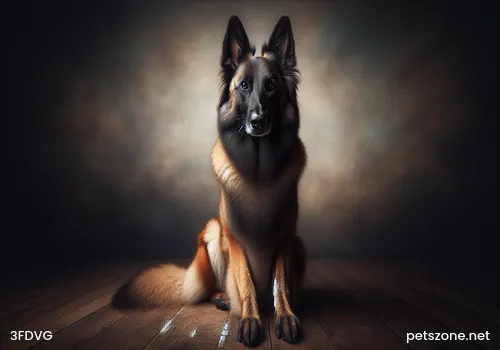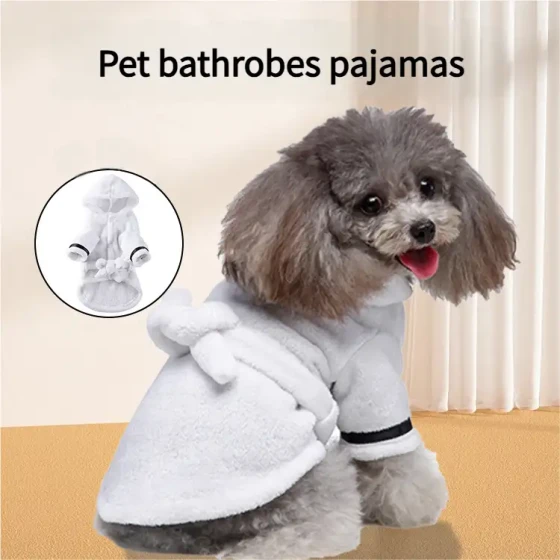Introduction to the Information on the Gordon Setter

Gordon Setter
The qualities of beauty, intelligence, and keenness come from Scotland’s beautiful black and tan Setter. This ancient lineage can be traced back at least to 1620. At that time, a writer named Morkham praised this black and tan dog as the most enduring. This dog was popular among Scottish hunters for nearly 10 years before the black and tan (or occasionally black, white, and tan) Setter began appearing in the kennels of the 4th Duke of Gordon in 1820. When reviewing these kennels’ dogs, a writer familiar with Gordon Setters described them with as much detail as a modern retriever enthusiast describes today’s Golden Retriever: "This type of Gordon Setter is easy to spread as a fine example with a natural good background. Although they are not the fastest breed, they have excellent endurance and can stay steady in place from morning until night. Their sense of smell is first-class, rarely making a wrong indication, which is why they perform exceptionally well in field tests. When they stand there, you can tell by their appearance that they are hunting dogs." Later, a famous authority, Idstone, emphasized: "I think the black and tan Setter is better than any other breed."
The beautiful appearance of the Gordon Setter and its superb hunting ability attracted many people. In 1842, George Blunt imported a pair of dogs from Gordon Castle to the United States. The pictures of this pair, “Rake” and “Rachel,” show that “Rake” was a white-bodied dog with a curly coat and black back; “Rachel” was black with yellowish-brown spots and was later given to Daniel Webster. In the following years, other important breeds from the UK, Scandinavian countries, and the United States helped the Gordon Setter gain greater popularity as both a pet and a loyal hunting dog, especially during the period when prey was sold as commodities (these hunting dogs brought many prey to their owners daily).
With the formation of field tests as competitions, the popularity of the Gordon Setter declined for a period because the breed’s characteristics put it at a disadvantage, mainly due to its lack of extreme speed. Today, clubs in several regions hold field tests supporting the Gordon Setter to develop greater versatility and speed to maintain its superiority as a well-bred, reliable hunting dog.
The Gordon Setter’s eager desire to work for its owner is consistent worldwide, and its agile reaction and strong memory are also well known. This allows it to improve itself with age without needing retraining. Supported by strong national clubs, the Gordon Setter has not won honorary titles in field tests or show competitions. As a rule, show champions are regularly used for hunting to prove their excellent performance in the field, and likewise, field test winners appear at dog shows.
The coat color of the Gordon Setter is hard to identify in the wild, which is a frequent comment from those who have never seen this dog. Compared to yellow autumn grass and early snow, a black-colored dog is very conspicuous, but even against a black background, a black dog is hard to distinguish and thus safe from shooting.
For purebred Setters, the English Setter or Irish Setter are just general types, but the Gordon Setter is distinctive.
In field test competitions, the smaller-sized Gordon Setter is more popular, while larger dogs are better suited for show events. The formal breed standard allows a wide range in size mainly because individual sportsmen from different countries prefer different sizes of Gordon Setters to suit their regional hunting terrain. But the overall view for the dignified and beautiful Gordon Setter is consistent: a silky black coat with rich mahogany markings; limbs covered with fine hair of moderate length; distinct contours; a somewhat heavy head with long, low-set ears showing its intelligent traits; proper body size, strong physique, graceful gait, strong endurance, and zeal for work build an excellent foundation for long outdoor activity.
The qualities of the Gordon Setter are deeply loved by pet enthusiasts. This represents its most loyal contribution to family members. For malicious intruders, the Gordon Setter does not treat each as a friend, but its life is dedicated to its closest owner’s happiness. This nearly fanatic devotion not only makes the Gordon Setter a responsive hunting dog but also a well-behaved, extremely lovable family pet.
Breed Standard
Overall Appearance: The Gordon Setter is medium-sized, solid-bodied, black with tan markings, muscularly and skeletally developed, active, strong, and beautiful, capable of working outdoors all day. The back is strong and short; ribs expanded; tail short. The head is heavy and well defined. Temperament is intelligent, noble, and dignified, with no fearfulness or aggressive defects. Clear coat color and straight or slightly wavy hair are normal. It gives the impression of strength and vitality. Symmetry and excellent quality are most important. Individuals that are uniformly symmetrical are considered the finest. Movement is smooth and free. The head is held high, a typical feature.
Size, Proportion, and Bone: Males have a shoulder height of 61-68.6 cm; females 58.4-66 cm. Males weigh 25-36 kg; females 20.4-31.8 kg. Individuals exceeding or under these weight ranges are judged based on structure and condition. Extremely thin or obese dogs are abnormal, as underweight or overweight impairs the Gordon Setter’s working ability. In terms of weight-to-shoulder-height ratio, it is heavier than other Setters. The distance from the front chest to the back of the thigh roughly equals the height from the top of the shoulder blade to the ground. The skeletal muscle structure of the Gordon Setter is well developed.
Head: The head is deeper than wide, with a broad skull. Eyes are rather large, neither too deep nor too protruding, deep brown, bright and intelligent. Oval, not round. Eyelids tight. Ears low set, about level with the eyes, fairly large and thin, folded close to the head. The skull circumference is rather large and widest between the ears. Above and below the eyes are lean; the cheeks narrow. The head should have a clear stop. Viewed from above or the side, the muzzle is quite long but not pointed. Lips hang naturally but not drooping. The muzzle is as long as the skull length from the occiput to the stop, with the muzzle top parallel to the skull extension line. Nose is broad, black, nostrils open; the lip line from the nose to the drooping lips forms a distinct square shape. Teeth are strong and white with scissors bite. Pincer bite is not a fault. Teeth stained by distemper or related infections are not penalized.
Neck, Backline, and Body: The neck is long, slim, arched to the head, with no loose skin hanging. The backline has an appropriate slope. The body from shoulder to hip is short. The chest is deep, not too broad in front; ribs expanded providing ample lung space. The forechest is prominent; the loin is short and wide, not arched. The croup is nearly flat, slightly sloping towards the tail. The tail is short, not reaching below the hock, held horizontal or near horizontal, not docked, thick at the root and tapering to a fine point. Tail position is important for posture. If the bending angle at the first tail vertebra is large, the tail will be raised or droop excessively. Tail position should be judged in relation to pelvic structure.
Forequarters: The scapulohumeral joint should be fine, with the two blade tops close together tilting backward. Viewed from behind, the neck gradually widens smoothly and flatly down to the shoulders. The angle between the scapula and upper arm is roughly right. When standing, the forelegs are vertical to the ground. The foreleg bones are large and straight, not bowed; elbows free, neither turned in nor out. Pasterns straight. Dewclaws may be removed. The feet are cat-like, made up of tight, arched toes with hair between them; pads are thick. Feet neither turn in nor out.
Hindquarters: The hind legs from thigh to hock are long and flat, with well-developed muscles; from hock to foot short and strong. Stifle and hock joints bend well, neither turned in nor out. When standing, the hocks are vertical to the ground, thighs hang down parallel to the extension line of the hock. The feet are like the forefeet.
Coat: Soft and glossy, straight or slightly wavy but not curly, with long hair on ears, underbelly, chest, forelegs, hind sides, and tail. The feathering near the base of the tail is slightly wavy downward, gradually tapering into a triangle shape towards the tail tip.
Color and Markings: Black with rich tan markings, the tan markings may be vivid chestnut or reddish brown. Black stripes on toes are allowed. The boundary between black and tan is clear. No tan mixed into the black areas. The positions of the tan markings are: ① two distinct spots no larger than 2 cm in diameter above the eyes; ② on both sides of the muzzle, tan does not extend to the top of the muzzle but forms a band around the tip from one side to the other; ③ throat; ④ two clear large spots on the chest; ⑤ the inside of the hind legs from hock to foot, the black on the backside of the hind legs must be completely eliminated; ⑥ the front feet from the wrist or slightly above down to the foot; ⑦ around the anus; ⑧ a white spot on the front chest is allowed but the smaller, the better.
Gait: Brave, determined, a freely swinging and advancing gait. When moving, the head is held high and the tail always appears like a flag. Viewed from the front, the forefeet move up and down in a straight line, so the shoulder, elbow, and pastern joints align almost in a straight line. Viewed from behind, the hocks, stifles, and hip joints also almost align. Hence, the dog’s feet do not turn inward or outward when moving forward. Viewed from the side, the forelegs lift and extend forward to compensate for the strong drive of the hindquarters. The hindquarters stretch forward and rearward, making for long, powerful strides. The moving dog is steady and smooth, rhythmical, pleasant to watch, effortless, economical, and harmonious.
Temperament: The Gordon Setter is alert, joyful, excited, and playful. It is fearless and determined, intelligent and capable. It is loyal and affectionate with a strong will that endures rigorous training.



